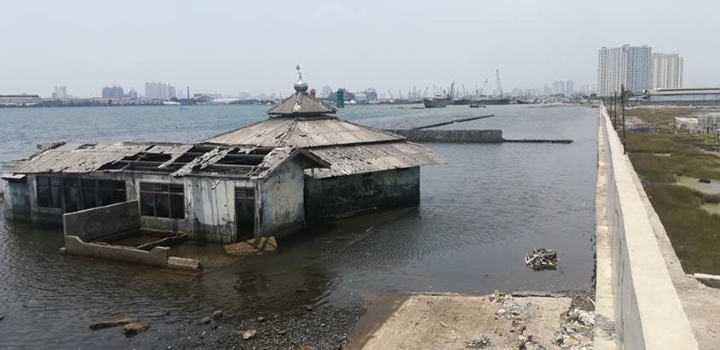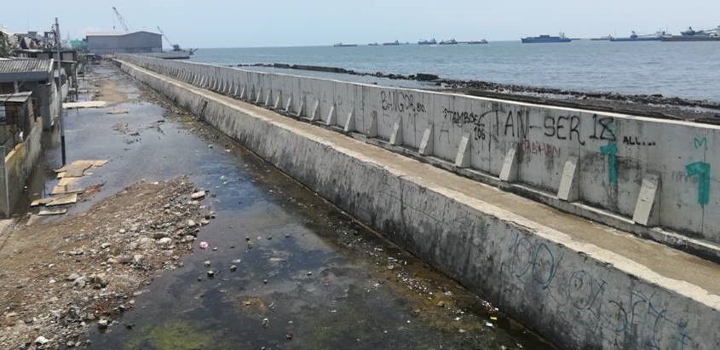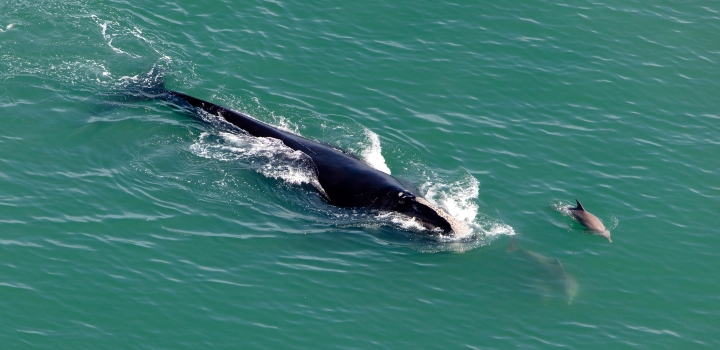Sea level rise up to four times global average for coastal communities
By: Communications

Coastal populations are experiencing relative sea-level rise up to four times faster than the global average – according to new research from the Tyndall Centre at the University of East Anglia.
A new study published today in Nature Climate Change is the first to analyse global sea-level rise combined with measurements of sinking land.
The impact of subsidence combined with sea-level rise has until now been considered a local issue rather than a global one.
But the new study shows that coastal inhabitants are living with an average sea level rise of 7.8 mm - 9.9 mm per year over the past twenty years, compared with a global average rise of 2.6mm a year.
And the impacts are far larger than the global numbers reported by the Intergovernmental Panel on Climate Change (IPCC).
Lead researcher Prof Robert Nicholls, Director of the UK’s Tyndall Centre for Climate Change Research and Chair of Climate Adaptation at the University of East Anglia, said: “Climate induced sea-level rise is caused by melting glaciers and thermal expansion of water due to rising global temperatures.
“Rapid rates of subsidence in deltas and especially cities on deltas are also human-caused, mostly due to groundwater pumping, also oil and gas extraction, and sediment resupply prevented by upstream dams, flood defences, sand extraction or mining.
“About 58 per cent of the world’s coastal population lives on deltas where land is subsiding. Less than 1 per cent of global coastal population lives where land is uplifting.
“We wanted to look at the big picture globally, to better understand the impact of global sea-level rise combined with measurements of sinking land.
“We found that coastal populations live with sea-level rise at three and four times the global average and that the impacts of sea-level rise being experienced today are much larger than the global numbers being reported by the Intergovernmental Panel on Climate Change (IPCC).
“Addressing human-induced subsidence is important in the short term, as it is an essential coastal adaptation to protect people and economies,†he added.

Image credit: Subsidence in Jakarta, Indonesia. Miguel Esteban, Waseda University, Tokyo, Japan.
The research team assessed four components of relative sea-level change - climate induced sea-level change, the effects of glacier weight removal causing land uplift or sinking, estimates of river delta subsidence and subsidence in cities.
Sea-level measurements were taken from satellite data. The team then weighted their results by population to show their importance to people.
The overall analysis used the Dynamic Interactive Vulnerability Assessment (DIVA) model which is designed for understanding coastal management needs.
They found that high rates of relative sea-level rise are most urgent in South, South East and East Asia as the area has many subsiding deltas and coastal flood plains, growing coastal megacities and more than 70 per cent of the world’s coastal population.
They also found that over the 20th Century, the city of Tokyo experienced net subsidence of 4m, while Shanghai, Bangkok, New Orleans, and Jakarta, have experienced between 2m and 3m subsidence.
In Tokyo, Shanghai and Bangkok the subsidence has been stopped or greatly reduced by reduced groundwater extraction, while in other cities there has been little direct response to reduce subsidence.
Prof Robert Nicholls said: “One of the main reasons that Jakarta, the capital city of Indonesia, is being moved to Borneo is because the city is sinking due to groundwater extraction from shallow wells.
“We hope that our analysis improves the understanding of how sea-level rise and subsidence are hand-in hand for science and coastal management policy worldwide. Jakarta might be just the beginning.â€

Image credit: Subsidence in Jakarta, Indonesia. Miguel Esteban, Waseda University, Tokyo, Japan.
The research was led by the University of East Anglia (UK) in collaboration with the Global Climate Forum, Berlin (Germany), Humboldt-University, Berlin (Germany), Bournemouth University (UK), Kiel University (Germany), Université de Toulouse (France), the University of Southampton (UK) and East China Normal University, Shanghai (China).
It was funded by the EC Horizon 2020 Framework Programme, IDRCEC Seventh Framework Programme, and EC Seventh Framework Programme.
‘A global analysis of subsidence, relative sea-level change and coastal flood exposure’ is published in Nature Climate Change on March 8, 2021.
Related Articles

Ambitious research to study fundamental earth and environmental science questions
The University of East Anglia is leading one of five innovative new research projects that could push the boundaries of science and help us understand key questions of environmental and earth science.
Read more
Government boosts UK resilience against climate change
New research to step up the UKs resilience to the impacts of climate change, such as flooding, heatwaves and extreme weather storms, is made possible by the launch of a new 5 million research programme today.
Read more
New technology ‘listens’ for endangered right whales
One of the worlds most endangered whale species could have added protection from threats posed by human marine activity, through technology developed by the University of East Anglia (UEA).
Read more